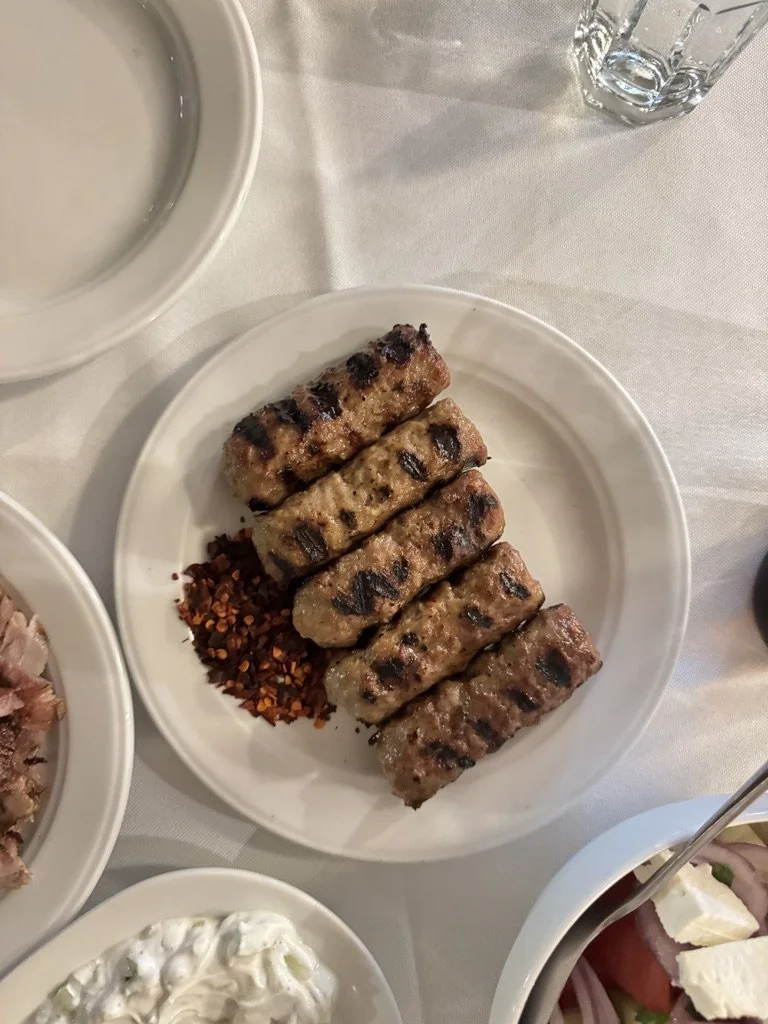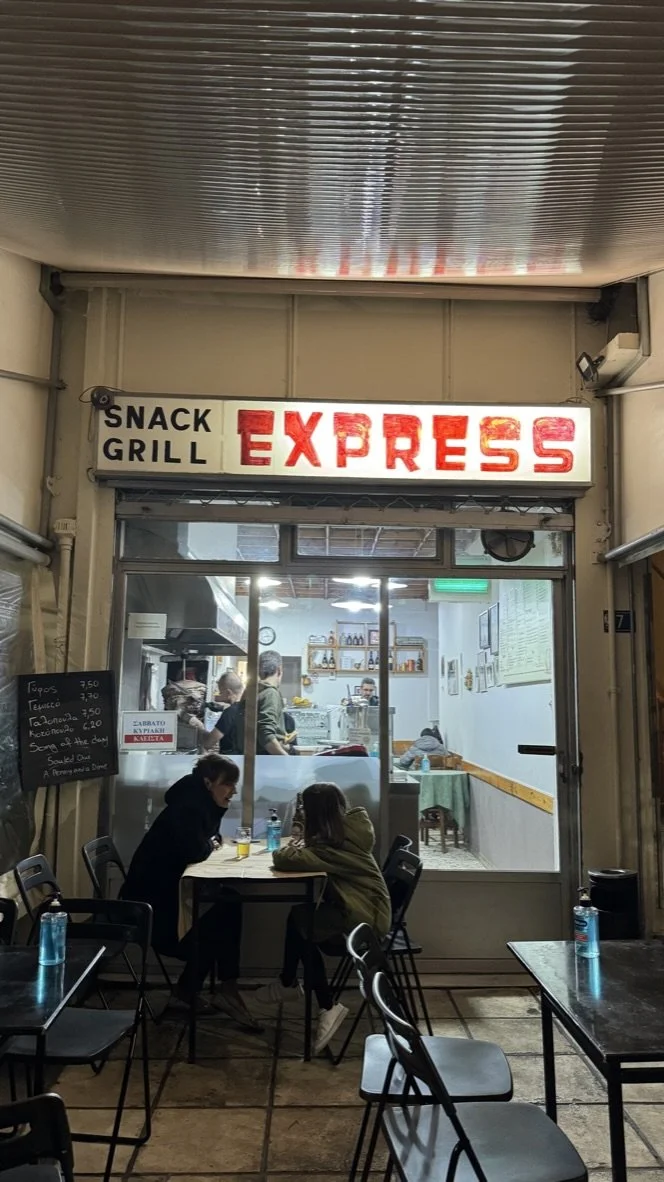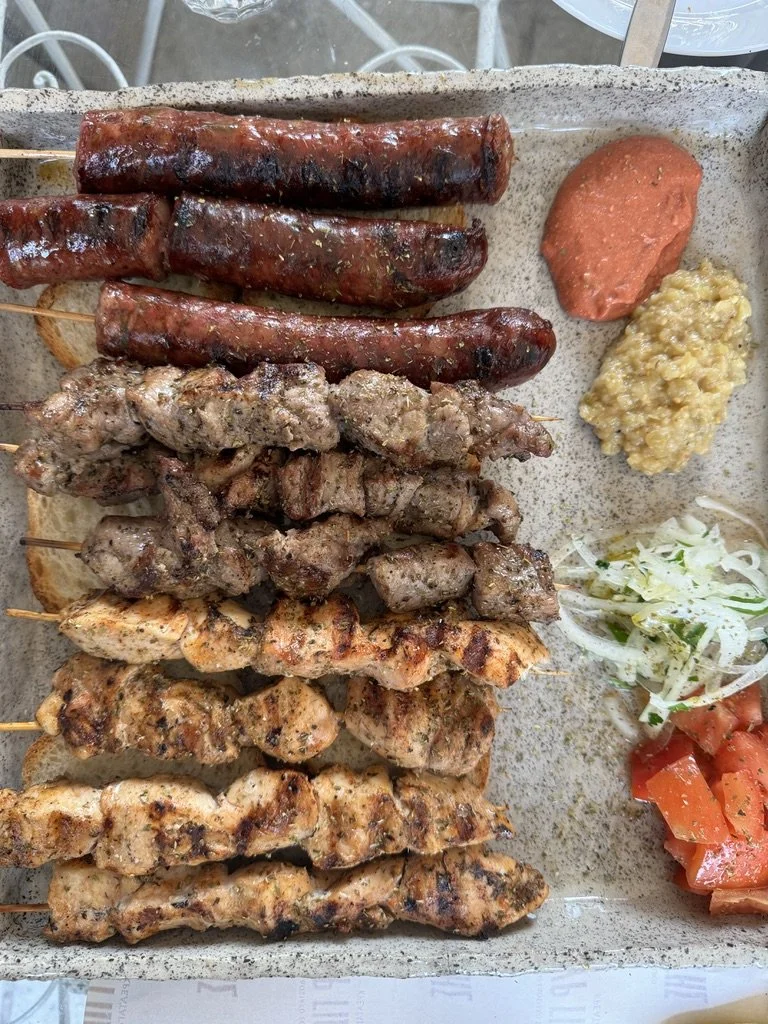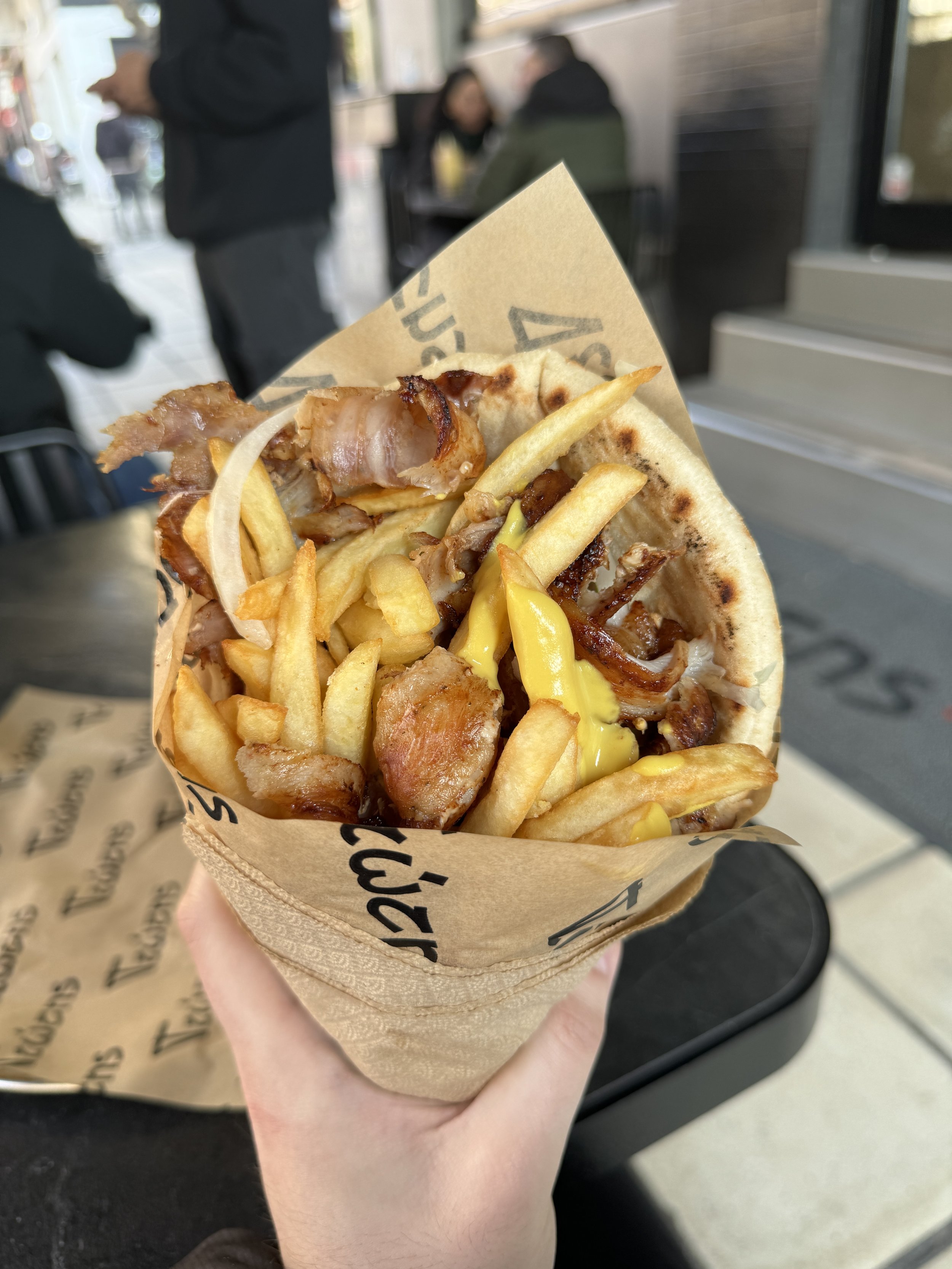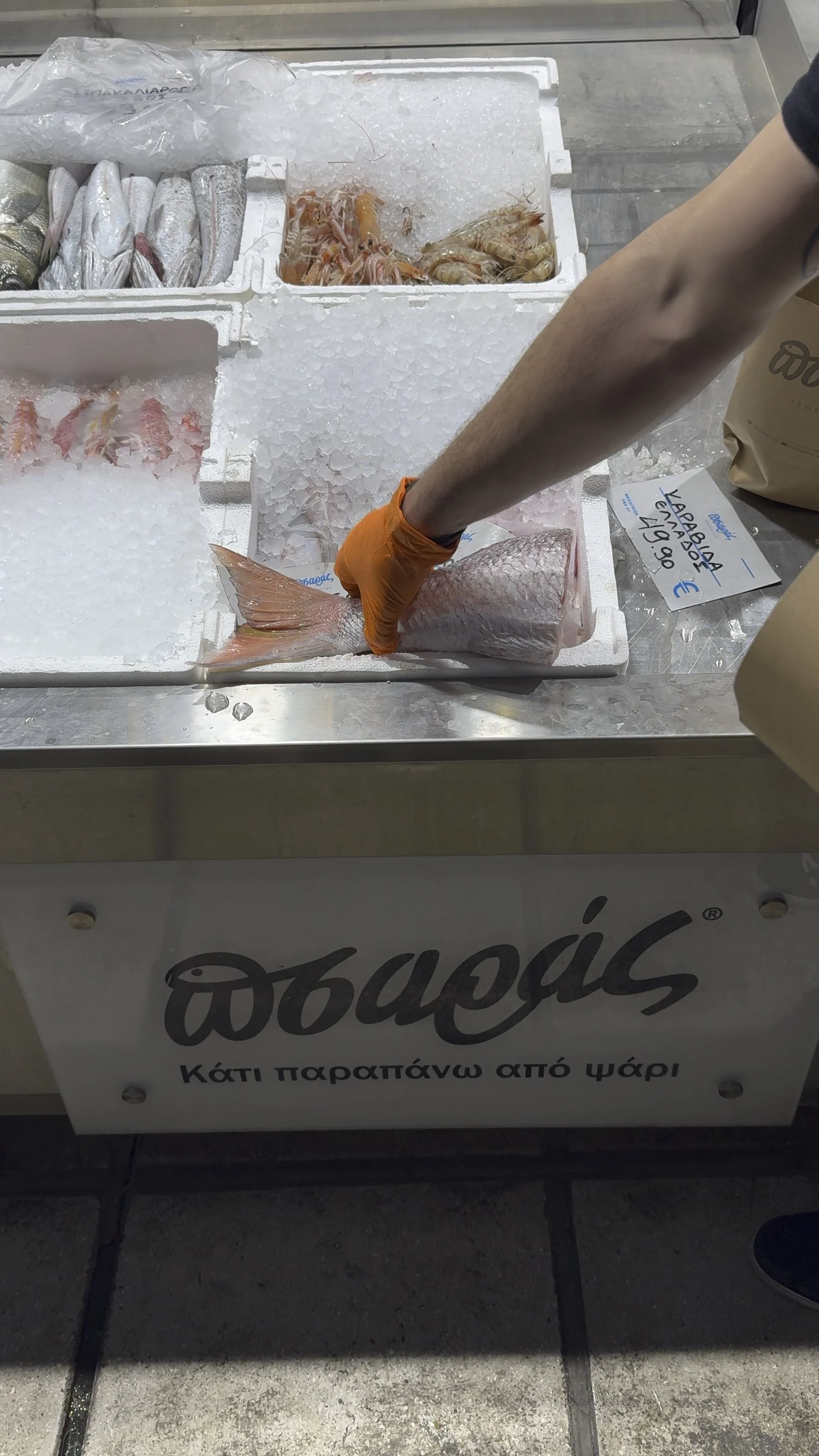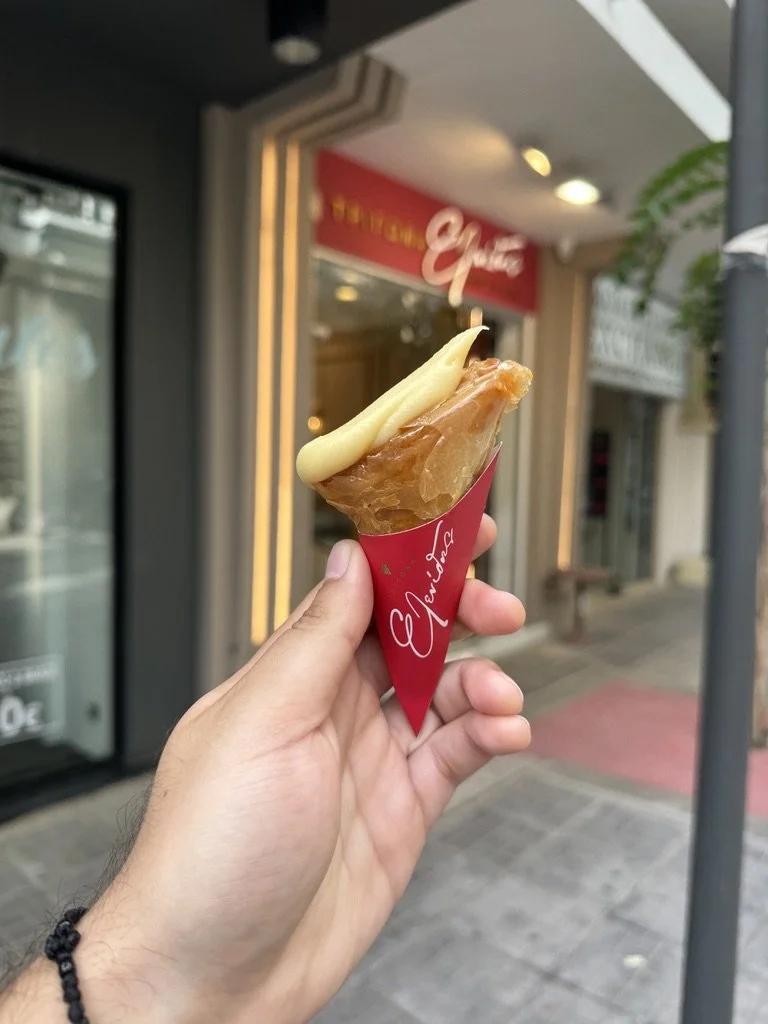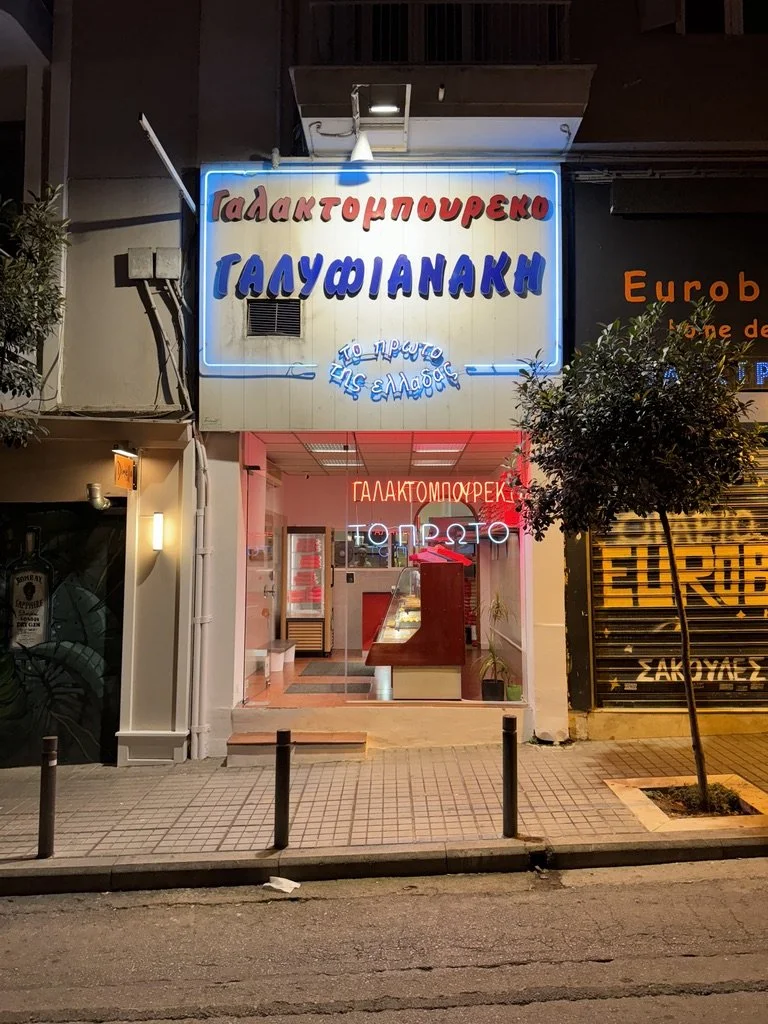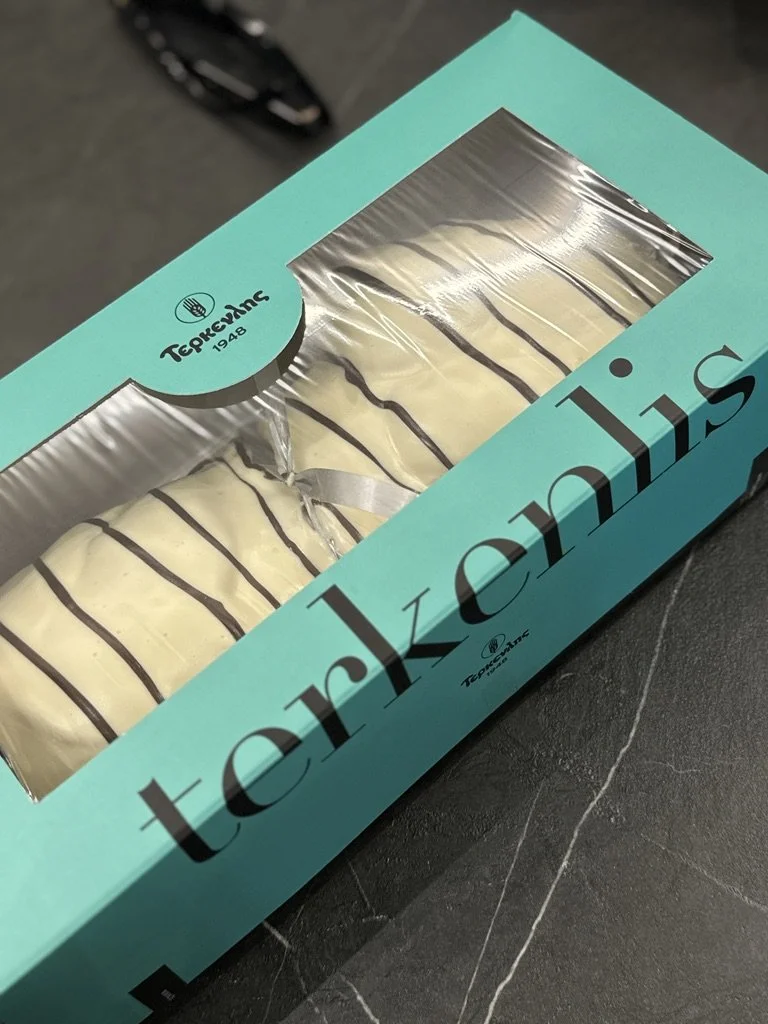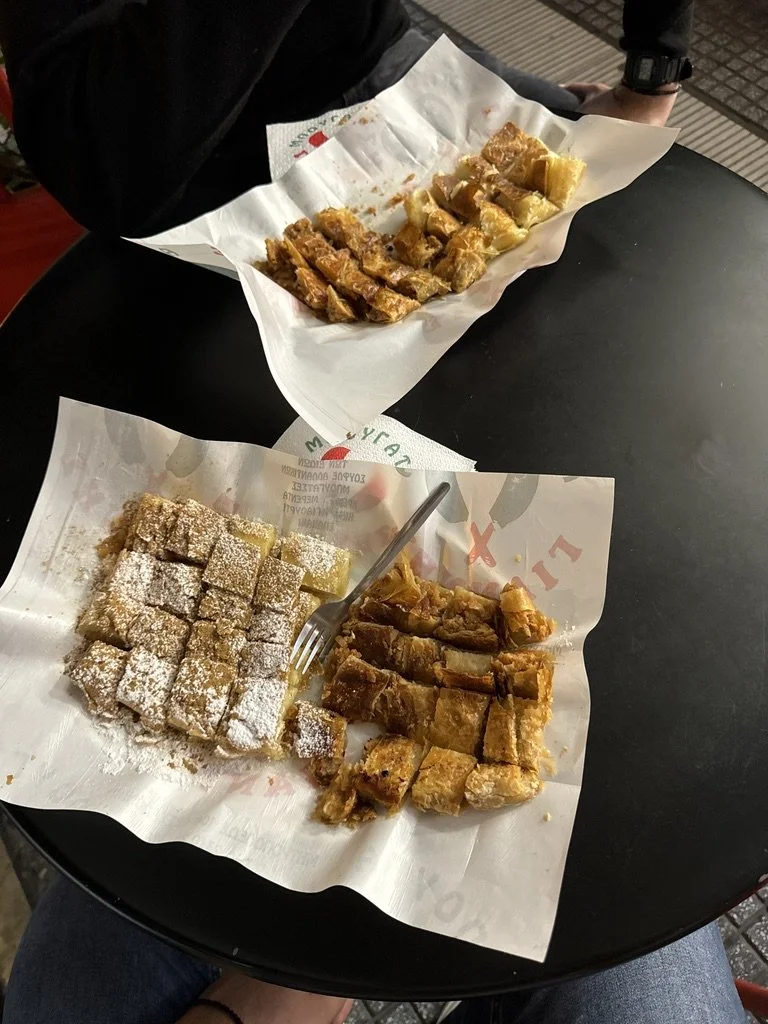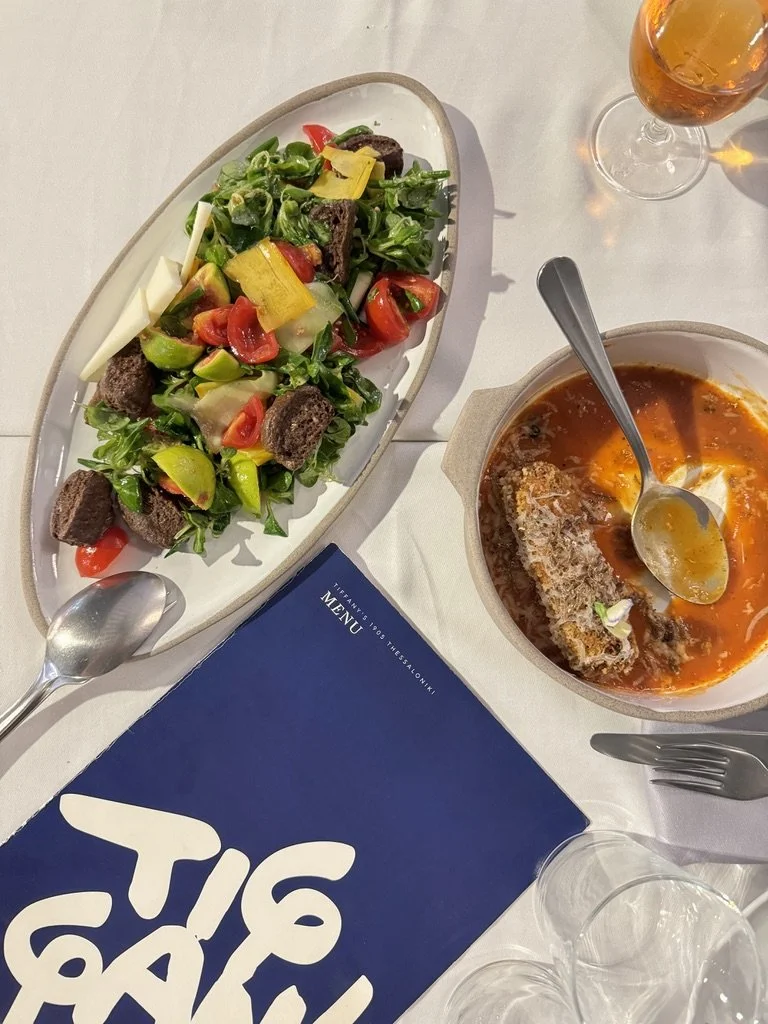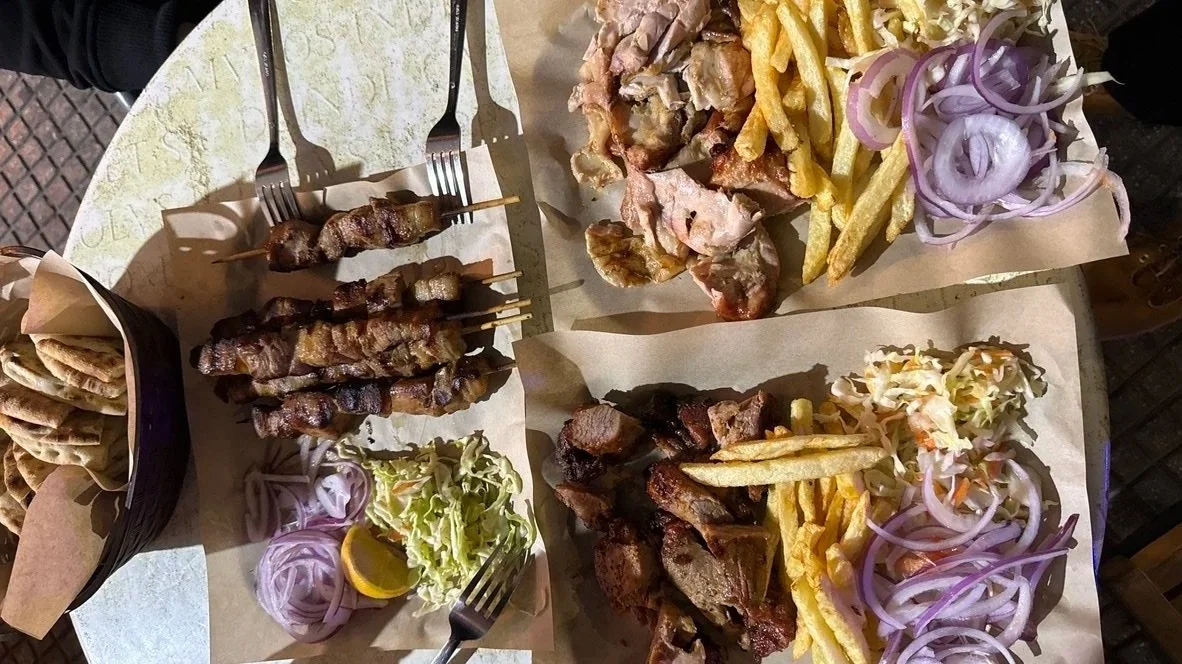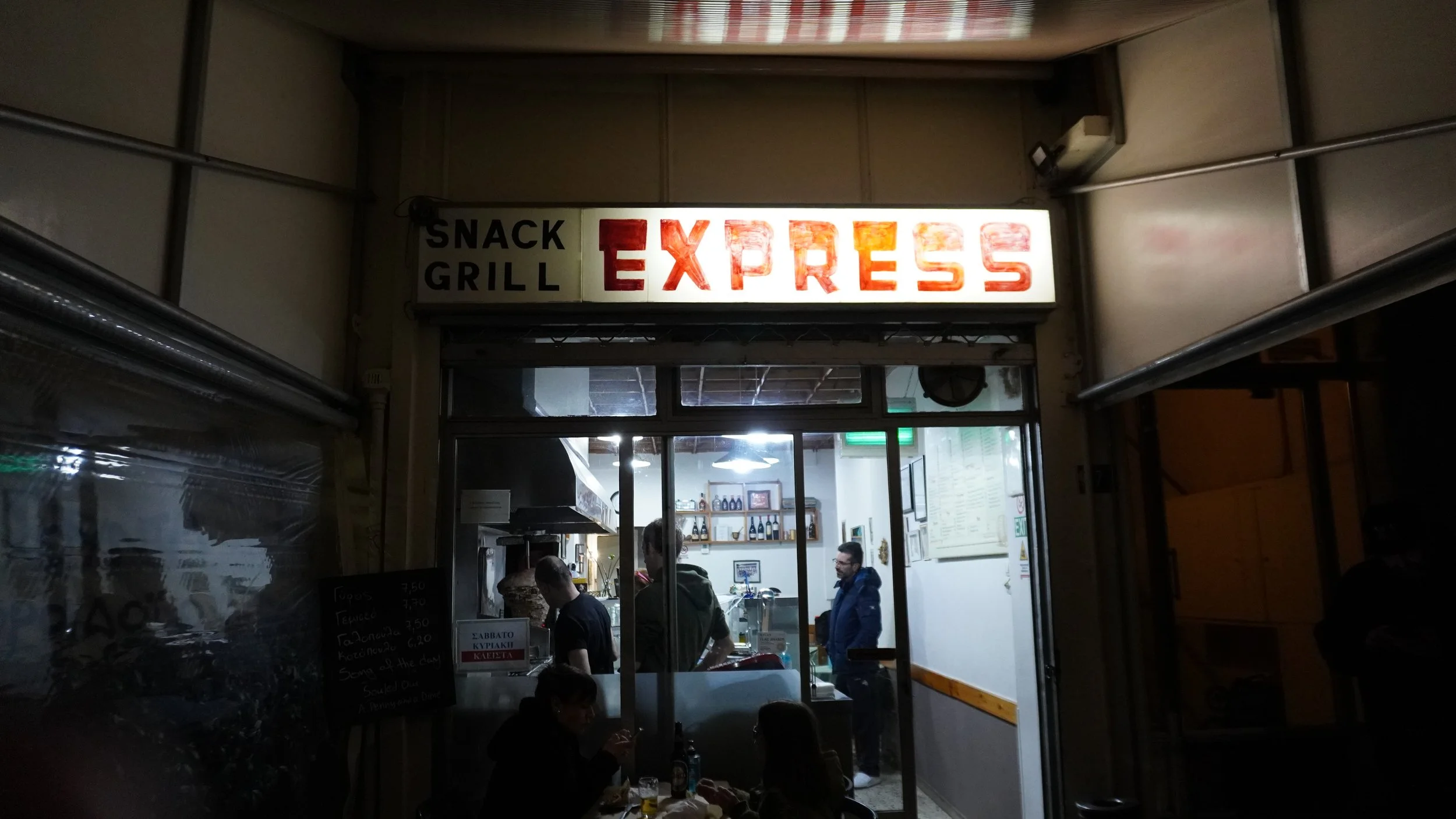
thessaloniki
GYROS
SOUTZOUKAKIA
BOUGATSA
TRIGONA PANORAMATOS
TSOUREKI
KOULOURI
SANDWICH
PITOGYRO
SOUVLAKI
GYROS SOUTZOUKAKIA BOUGATSA TRIGONA PANORAMATOS TSOUREKI KOULOURI SANDWICH PITOGYRO SOUVLAKI

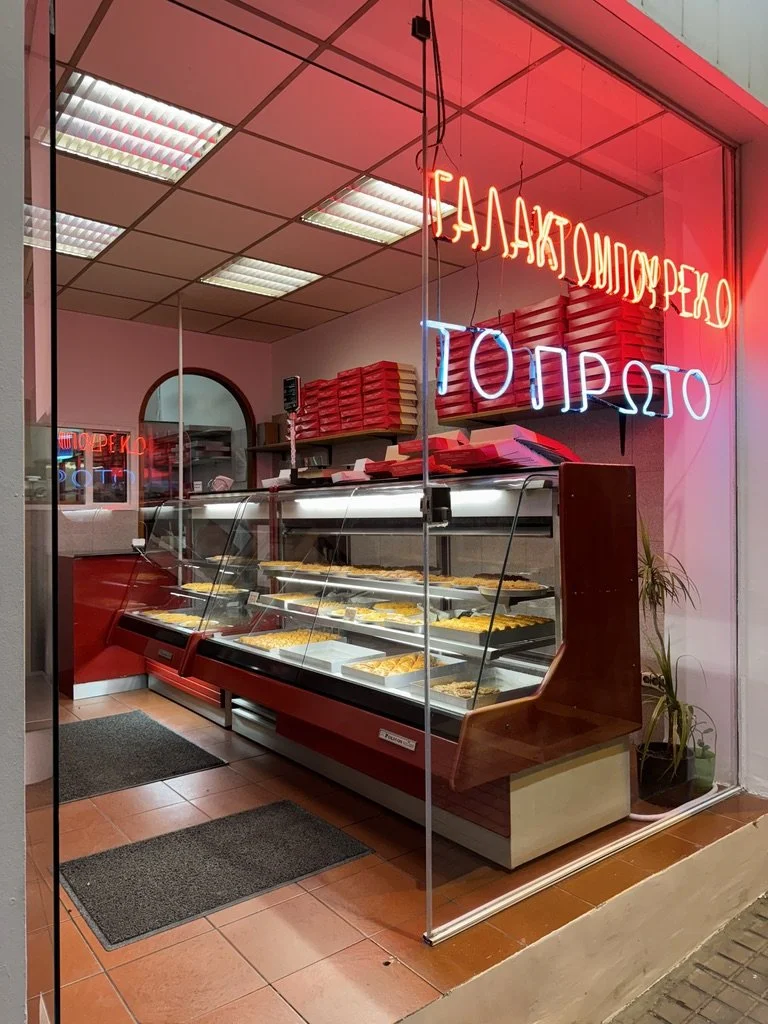

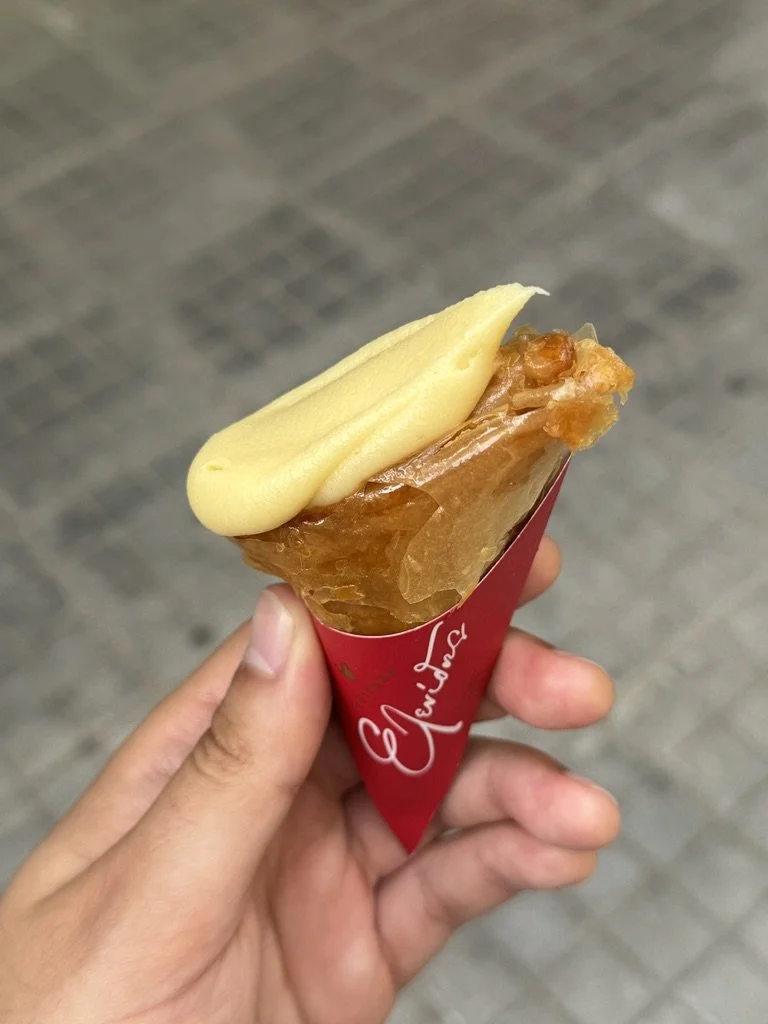
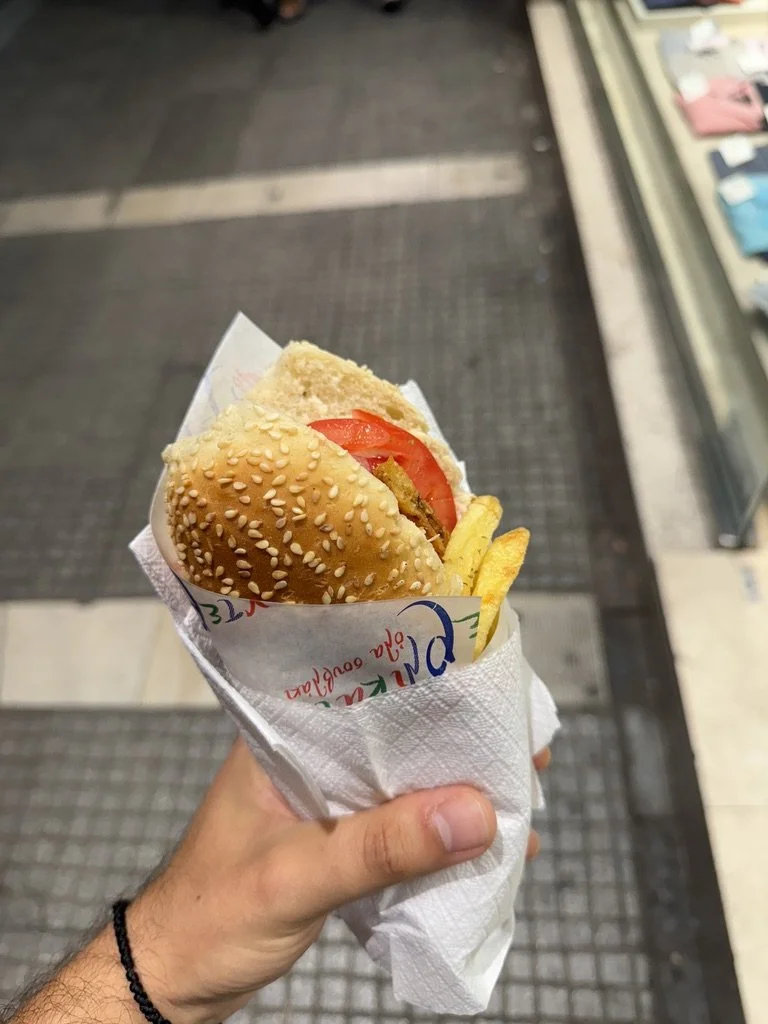
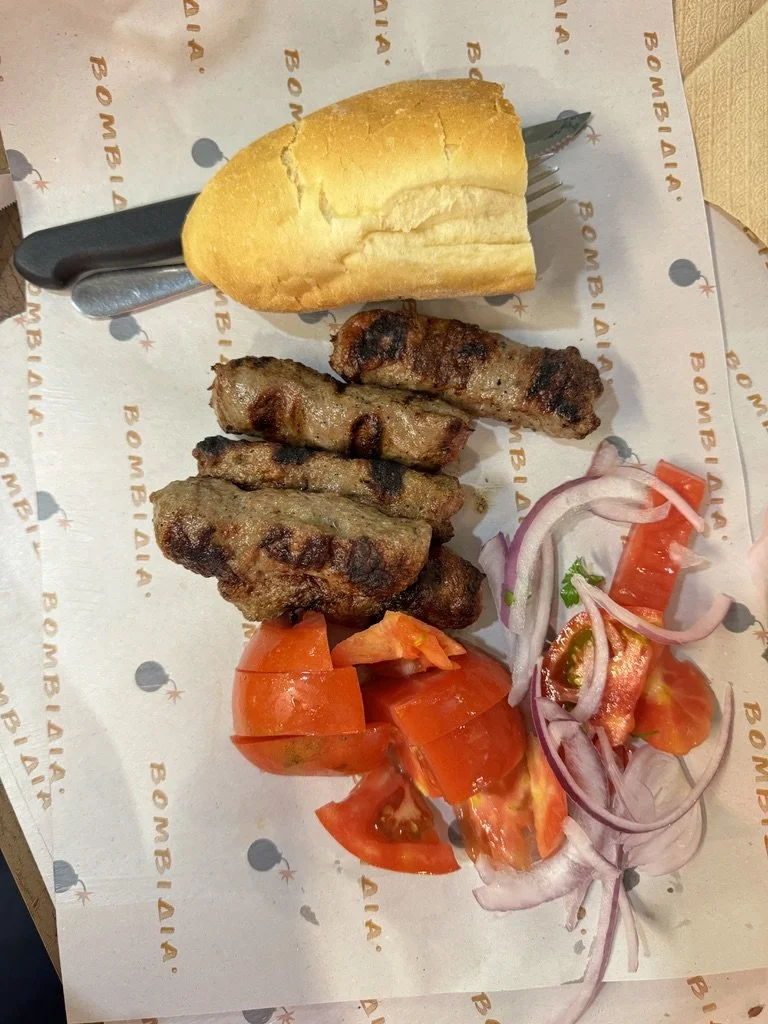

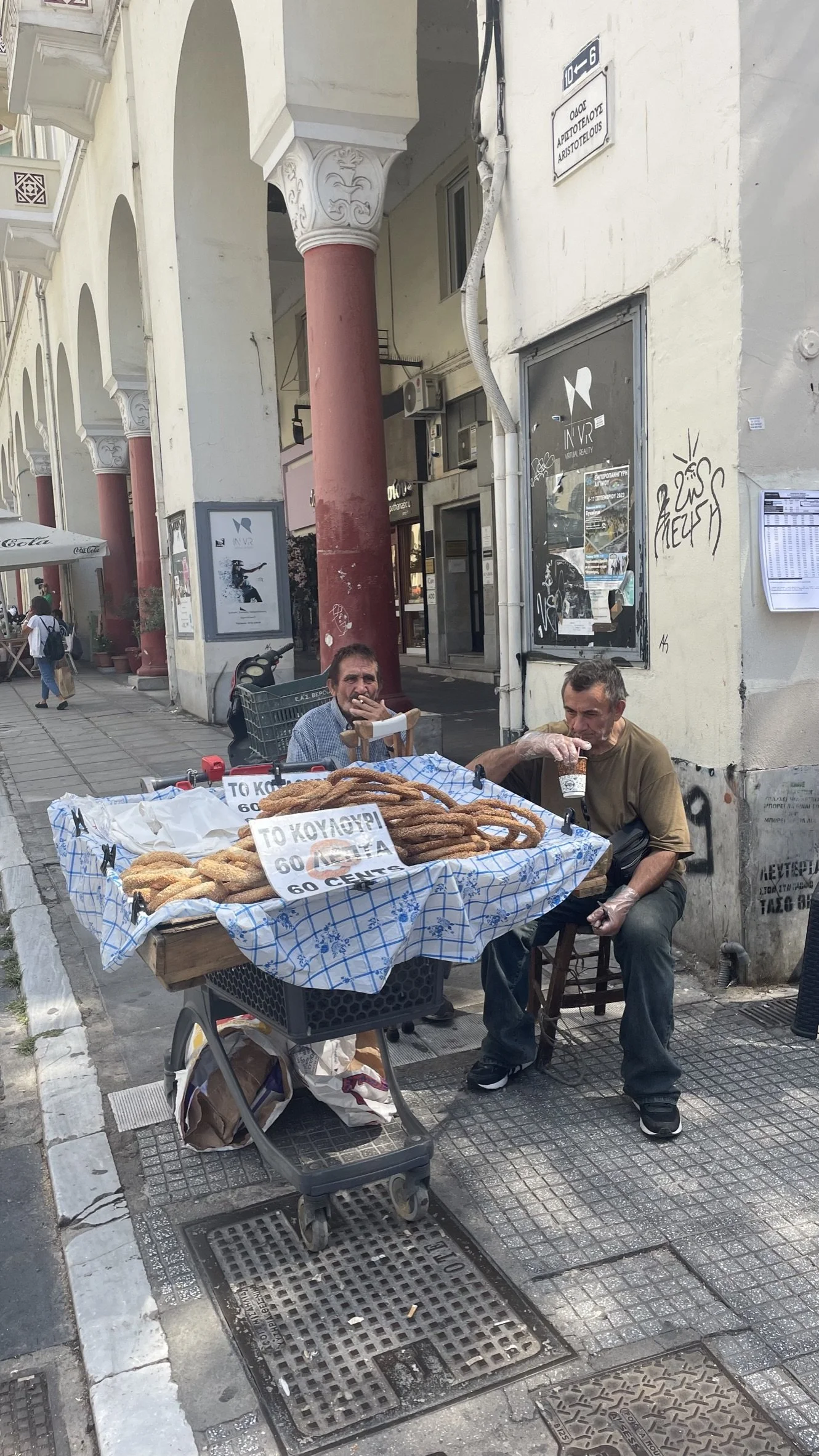
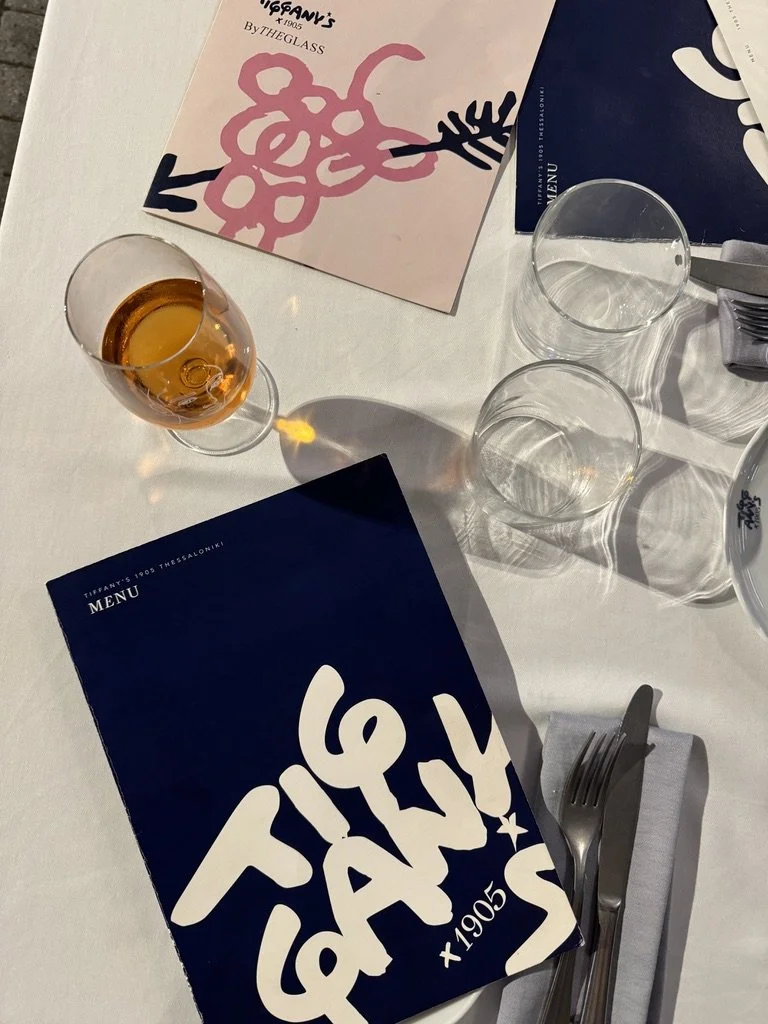
Thessaloniki is often cited as Greece’s culinary capital, by Greeks and visitors alike. Just as well, then, that it’s also Greece’s first UNESCO-crowned City of Gastronomy.
Given its geography, Thessaloniki became a crossroads of culinary ideas in the 20th Century, especially as it attracted a large influx of Greek refugees from Constantinople and Asia Minor, many of whom helped cement a lot of the culinary traditions and quirks of Greek cuisine that Thessaloniki is best known for today: gyros, soutzoukakia, bougatsa and tsoureki being some major examples. However, Thessaloniki’s own inventions, such as the trigono from Panorama, and its unique takes on some of the aforementioned traditions set it apart as a culinary capital with its own distinct identity.
You can’t walk very far in Thessaloniki without encountering giant spinning pillars of gyros, or bougatsatzides chopping at lightning-quick speed, or street vendors selling koulouria and salepi on main streets and busy junctions.
Here are 15 of Souvlakination’s favourite spots to give you the perfect intro.
-
Soutzoukakia: cylindrical shaped beef and lamb meatballs brought to Greece by Greek refugees from Asia Minor, from places like Smyrna. Smyrneïka soutzoukakia are best known across Greece and are served in an aromatic tomato sauce, but are quite different to the tradition of making soutzoukakia that took hold in Thessaloniki in the 20th Century. In Thessaloniki, the soutzoukakia are usually made with fewer spices and ingredients, are grilled to order and served without the sauce. Instead, they’re often served with chilli flakes (boukovo). You’ll find variations of the dish across the balkans in different forms, such as ćevapi.
Gyros: gyros is the (vertical) skewer stacked with layers of seasoned meat fillets that is carved to order, often served in pita as well as a portion with sliced onions and tomatoes. Gyros is a huge part of Thessaloniki’s culinary traditions and is particularly popular in Greece’s culinary capital. You’ll see giant columns of gyros spinning at gyradika throughout the city, and its pites and sandwiches are known for being noticeably bigger than what you find in Athens and much of the rest of Greece (of course the price does factor that difference in). If Greece has a capital city of gyros, it’s Thessaloniki, without a doubt.
Pita gyros: a pita bread with gyros in it, i.e. the classic gyros wrap. When you order gyros in Thessaloniki, you’ll need to specify if you want it in pita bread or another kind of bread.
Pitogyro: compound word for pita gyros and a general term used to describe the pita wrap.
Sandwich: a general term which, particularly in Thessaloniki, is also used to describe the pitogyro. Again, you’ll need to specify what you want in it and the kind of bread you would like if there are options on the menu.
Gyradiko: the gyros joint.
Souvlaki: in Thessaloniki, souvlaki exclusively refers to the grilled (pork) skewer (while souvlaki also refers to the pita as a whole in Athens). Thessalonians poke fun at Athenians for calling the plain skewer kalamaki, which also means straw. You can read the most comprehensive definition of the word ‘souvlaki’ on the internet here.
Aloifi: the general term for sauce or dips in Thessaloniki. The classic condiment in Thessaloniki is mustard (and often also ketchup nowadays). If you want tzatziki in your pitogyro, you’ll have to explicitly ask for it. Southern Greeks poke fun at Thessalonians for using the term – as it also generally refers to medical cream – asking them which painkiller they prefer in their ‘sandwich’.
Bougatsa: a pastry filled with cream or other fillings that is particularly popular in cities like Thessaloniki and Serres northern Greece, where a lot of refugees from Asia Minor brought over traditions from Asia Minor (like döner). While pites and pies have always been a part of Greek cuisine since ancient times, bougatsa is also lauded for the level of skill and technique it takes to create the perfectly thin and flakey filo pastry that makes it so adored. Although it’s usually filled with cream and topped with icing sugar, bougatsa can come in sweet and savoury forms these days (even with minced meat, for example). You’ll find bougatsatzidika throughout Thessaloniki, many of them also open overnight (it’s a myth that bougatsa is strictly a breakfast; just like any pita it can be eaten at any time but is also the perfect stop on the way home after a heavy night out).
Trigona Panoramatos: cream-filled triangular pockets of crispy, syrupy filo pastry invented by Giannis Elenides around the mid-20th Century in Panorama, Thessaloniki. His legacy includes Elenides stores run by his children and grandchildren to this day, while, in just half a century, his invention has become Thessaloniki’s patron dessert.
Tsoureki: the fluffy, sweet, platted bread that is particularly popular around Easter and Christmas and is often likened to brioche. Stavros Terkenlis and his family have struck international commercial (and culinary) success in the past half century with a patisserie chain that first started in Thessaloniki and is best known for its tsourekia, which come in many variations (also dipped in chocolate and filled with creams). You’ll always find them in Greek airport shops, as it’s a common gift to take home or to hosts in Greece (like the trigona too).



